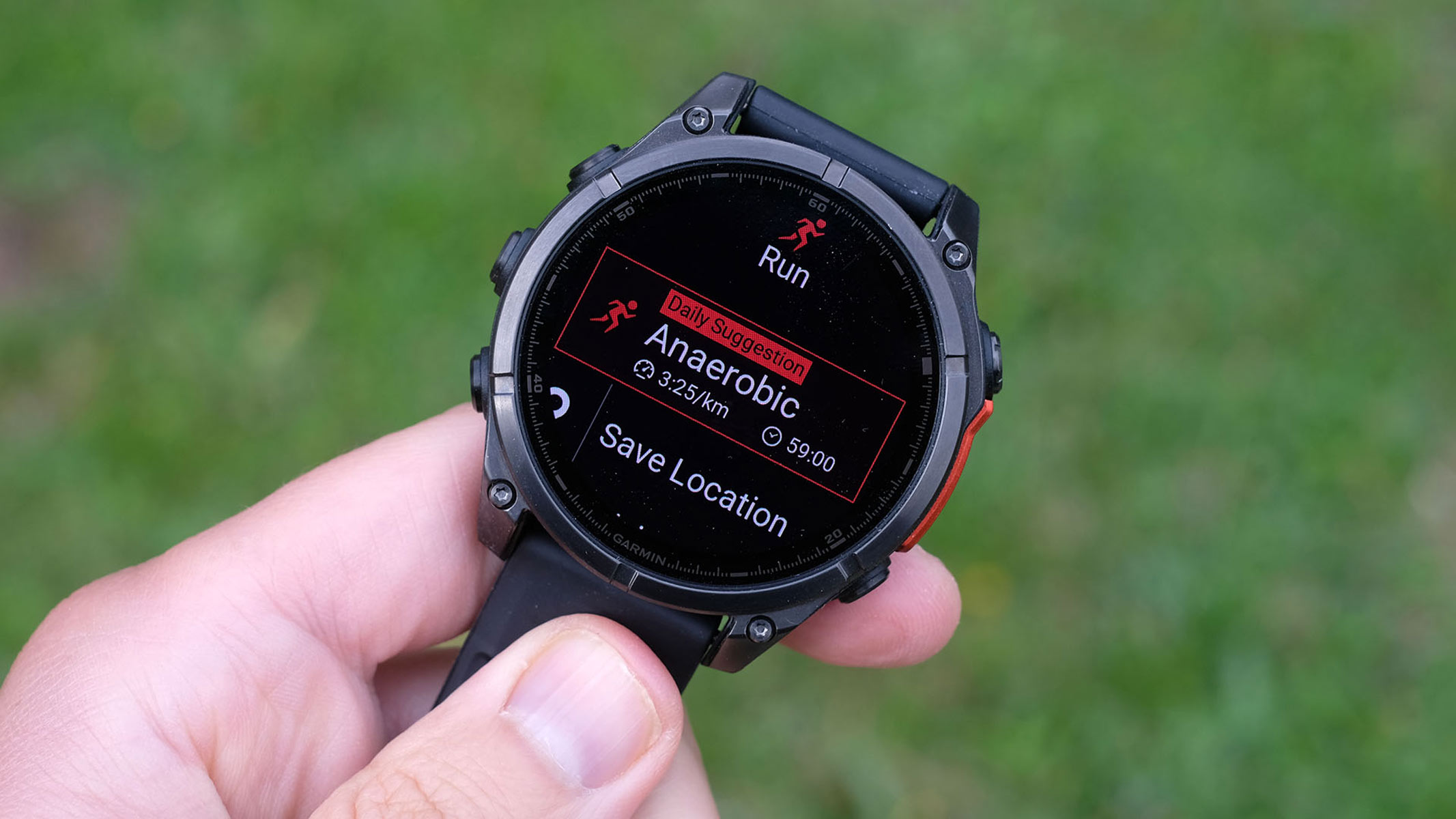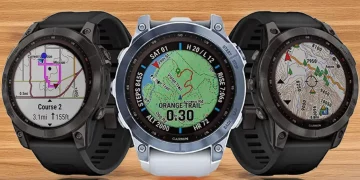Introduction
In a world where technology continuously intertwines with our daily lives, it’s no surprise that even the most rugged adventurers are turning to tech gear for assistance. Smartwatches, once simply a tool for checking the time or notifications, have evolved into compact powerhouses, capable of enhancing outdoor adventures. Whether you’re scaling mountains, navigating forests, or exploring new cities, these devices promise to provide more than just the usual fitness tracking.
But the question remains: are smartwatches truly making a difference in our adventures? With all the features available today, from GPS navigation to heart rate monitoring, the benefits of a smartwatch are obvious, but do they live up to the hype when it comes to real-world outdoor exploration?
In this article, we’ll explore the advantages, limitations, and the actual impact of smartwatches on your adventures. By the end, you’ll have a clear sense of whether these high-tech wearables deserve a place in your adventure gear or if they’re just another gadget to leave behind.
The Rise of the Smartwatch: From Timepiece to Adventure Tool
Smartwatches have come a long way since their inception. Initially designed to sync with smartphones, offering notifications, and allowing users to track basic fitness metrics, these devices have now evolved into specialized gadgets aimed at improving performance in a range of activities—especially outdoor and adventure sports.
The Versatility Factor
Smartwatches, especially models designed for athletes and adventurers, are more than just accessories. They’re multifaceted devices that combine the functions of several gadgets into one sleek wearable. For example, the Garmin Fenix, Suunto 9, and Apple Watch Ultra all offer:
- GPS Navigation: For hikers and mountaineers, the ability to get precise location data and real-time navigation is invaluable.
- Altitude and Barometric Sensors: Climbers and trekkers rely on these features to monitor altitude and weather conditions, vital information for high-altitude expeditions.
- Heart Rate Monitoring: Whether it’s tracking exertion levels during a trail run or monitoring your recovery after a long day of trekking, heart rate data can help optimize performance and safety.
- Weather Updates: Adventure enthusiasts know that weather can change in an instant. Real-time updates about storms, temperature shifts, or wind speeds could be life-saving in certain situations.
The evolution of smartwatches has made them indispensable tools for adventurers seeking real-time data and improved decision-making capabilities.

Benefits of Smart Watches for Adventurers
1. Real-Time Tracking and Navigation
One of the most significant ways that smartwatches enhance outdoor adventures is through real-time tracking and navigation. Gone are the days of bulky maps and compasses. Smartwatches equipped with GPS technology allow you to track your position and set routes with just a few taps.
Whether you’re hiking through the dense forests of the Pacific Northwest, trekking across the Swiss Alps, or cycling on remote desert trails, a smartwatch can provide step-by-step directions, show topographic maps, and even create routes based on your preferences. Devices like the Garmin Fenix 7 and Suunto 9 Baro are known for their robust GPS capabilities, providing detailed maps and the ability to navigate in remote areas where phone service is nonexistent.
2. Fitness and Health Tracking
While most people use smartwatches for daily fitness monitoring—tracking steps, calories burned, or sleep—these features become even more critical when you’re in the great outdoors. Altitude tracking, heart rate monitoring, and calorie consumption are essential for adventurers to understand their body’s condition during intense activities like hiking, mountaineering, or cycling.
For instance, during long-distance runs or mountain climbs, keeping track of your heart rate zone ensures you stay within a safe range, avoiding overexertion or potential health risks. Additionally, advanced models allow you to assess your VO2 max and lactate threshold, giving you a complete view of your physical performance.
3. Safety Features
Many smartwatches now come equipped with safety features that can be a game-changer during an outdoor adventure. One of the most notable safety features is incident detection. If the smartwatch senses a fall or abnormal activity (such as sudden lack of movement), it will send an automatic alert to emergency contacts or local authorities, along with your GPS coordinates.
In remote locations, this could be the difference between life and death. For instance, the Apple Watch Series 8 and Garmin Forerunner series are known for their ability to detect a fall or sudden injury, which is especially useful for solo adventurers or those taking on particularly risky expeditions.
4. Long Battery Life for Extended Adventures
When you’re deep in the wilderness, the last thing you want is your smartwatch running out of battery. Fortunately, many modern smartwatches are designed for endurance, boasting long-lasting batteries capable of lasting several days or even weeks on a single charge.
For instance, the Garmin Fenix 7 can last up to 18 days in smartwatch mode and up to 57 hours in GPS mode. This is a far cry from earlier smartwatches, which often needed charging every day or two. For long expeditions, this extended battery life ensures you have access to essential functions like GPS navigation, weather alerts, and health monitoring without worrying about running out of power.
5. Stress-Free Exploration with Music & Media Control
One often-overlooked benefit of smartwatches during adventures is the ability to control music, podcasts, or audiobooks without needing to take out your phone. Whether you’re on a hike, cycling on a trail, or kayaking on a serene lake, music can elevate the experience, and smartwatches make it easier than ever to adjust volume, skip tracks, or pause without breaking stride.
Some smartwatches even allow for offline media storage, meaning you can upload your playlists directly onto your watch and listen without needing to rely on a phone or internet connection.
Limitations of Smart Watches for Adventurers

Despite their numerous benefits, smartwatches have limitations that may make them less suitable for certain situations. Let’s look at some of the drawbacks to consider.
1. Limited Screen Size for Detailed Maps
While modern smartwatches can display maps, they can’t replace the level of detail and clarity you get from a larger device like a smartphone or tablet. In challenging terrain, small screen sizes can make it difficult to read routes, assess terrain, or zoom into critical points on the map.
When navigating through dense forests or cliffside trails, the minute details of a map—such as identifying minor paths or recognizing elevation changes—can be more challenging on a tiny smartwatch screen.
2. Durability Concerns in Extreme Conditions
While many smartwatches are designed to be durable, they are not indestructible. Even the best models can experience damage when exposed to extreme conditions such as extreme cold, submersion in deep water, or exposure to excessive dirt or mud. In these situations, more specialized gear may be necessary.
Moreover, while some smartwatches come with waterproofing features, they’re often rated only for certain depths, which means you may still need additional gear (like a diving watch) for aquatic adventures.
3. Battery Life Isn’t Infinite
Although smartwatch battery life has improved drastically, it’s still far from infinite. For long, multi-day expeditions, it’s a real concern. While some watches like the Garmin Fenix 7 and the Suunto 9 are designed for prolonged battery life, they still can’t provide indefinite power, especially when using power-hungry features like GPS or music streaming.
4. Over-Reliance on Technology
Relying too much on technology can make adventurers forget the importance of traditional skills like map reading, navigation, or basic survival tactics. Over-reliance on a smartwatch might lead to a dangerous situation if the device malfunctions, runs out of power, or loses signal.
It’s essential to remember that a smartwatch is just a tool—it doesn’t replace the need for fundamental outdoor skills.
Conclusion: Should You Bring a Smartwatch on Your Adventure?
Smartwatches undeniably enhance many aspects of an adventure, particularly when it comes to navigation, fitness tracking, safety, and convenience. They offer a wide range of features designed specifically for outdoor enthusiasts, from heart rate monitoring to real-time location tracking. For those venturing into remote areas, their ability to act as a lifeline in emergency situations is invaluable.
However, while the smartwatch can be a great ally in your adventures, it isn’t without its limitations. The small screen, battery life constraints, and potential for malfunctions in extreme conditions remind us that smartwatches should complement—not replace—traditional outdoor skills.
If you value convenience, safety, and access to real-time information, a smartwatch will undoubtedly enhance your outdoor experiences. Just make sure to plan accordingly—charge your device, carry backups, and always be prepared to rely on your own instincts and outdoor knowledge.























